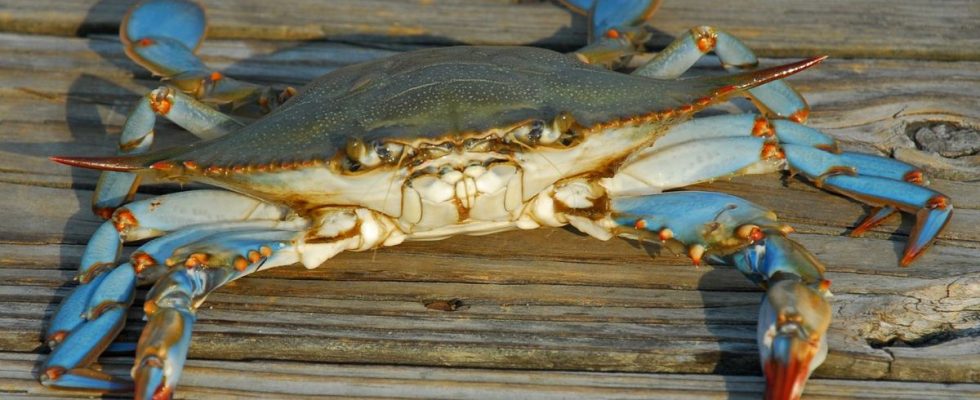Completed on May 30, the annual Pelgas ecosystem monitoring campaign in the Bay of Biscay has just delivered its conclusions for the year 2023. The observations carried out by Ifremer scientists on board the ship Thalassa, accompanied by two professional fishing vessels, show that the sardine population is holding up, while that of anchovies has been halved compared to 2022, even if it remains much higher than the years 2005-2009, when this species was threatened with extinction. These indices, pooled with the Spanish indices, will be used to establish fishing quotas for the Atlantic by the end of the year.
However, the most astonishing fact noted during this campaign does not concern a fish, but a species of crab: the swimming crab. “We observe these crabs every year but we have never seen them so numerous and organized in schools,” says Erwan Duhamel, fisheries technician and co-head of mission on the Pelgas campaign. 20 minutes questioned him.
You point out in the results of the Pelgas 2023 study, having observed schools of swimming crabs in large quantities in the Bay of Biscay. What does that mean ?
It is quite normal to see this species of swimmer crab in the Bay of Biscay, since it is part of the pelagic ecosystem, but this year we have indeed found it in abundance. You have to be careful about the explanations, firstly because Pelgas is only a snapshot: the campaign was carried out in May, and nothing says that if we went to sea now, we would find these schools of crabs. Or on the contrary perhaps they have developed even more. Second, the Pelgas campaign has been going on for about 20 years, so we don’t know for sure whether such sightings happened 40 or 50 years ago. Finally, technologies are constantly improving, especially acoustics, which is a recent science. So there are things that we can detect now that we couldn’t a few years ago.
What is special about this species?
It is a crab that almost never touches the bottom. It lives in the water column, sometimes on the surface, it can be seen by the way while sailing along the coast. It is part of the prey of all tunas throughout the Northeast Atlantic.
In addition to these shoals of crab, you point out that you have also observed a lot of gelatinous planktonic animals, while the fishermen have been raising a lot of jellyfish since June. Can all this be linked to climate change?
There is a lot of uncertainty, but it still suggests a disruption of the ecosystem. Things are happening that don’t make you quite calm. Almost every year, we have a surprise guest in the ecosystem that we didn’t see before. I’m not necessarily talking about fish, but plankton, gelatinous… A few years ago, for example, the salps that we saw in large quantities. These are small gelatinous organisms of 2 to 3 cm in size which clump together to form ribbons of two to three meters. Five years ago, small pelagic gastropods invited themselves. We have also seen more and more jellyfish for several years. What can that mean? We are looking, because all this is quite recent. This is why we must continue to carry out these observations, and to quantify the biomasses of fish of course, which is of most interest to professional fishermen.
Precisely, what are the trends this year in terms of fish volumes?
On the sardine, the first species of fish caught on the Atlantic coast, we are neither in the red, nor in an exceptional year. But it seems that the decline in sardine growth that has been observed for years has finally been halted. On the anchovy, the situation is not catastrophic but the population observed has been halved compared to 2022, and we have returned to an average level, whereas we had been at exceptional biomass levels for years. . We have come a long way with the anchovy, because in 2005 there were so few of them that we wondered, even when fishing was closed, if it was going to be able to rise again from its ashes. It was not because of the fishery but because of the environment, but the fishery had to be closed for five years. The measure was effective, since in 2021 there were anchovies everywhere.

